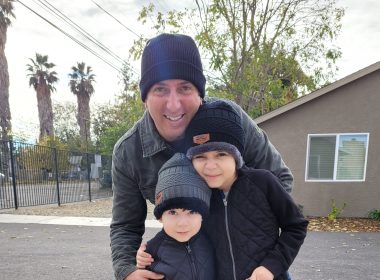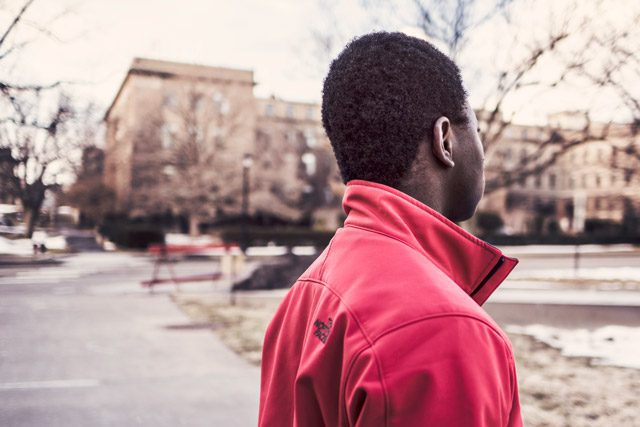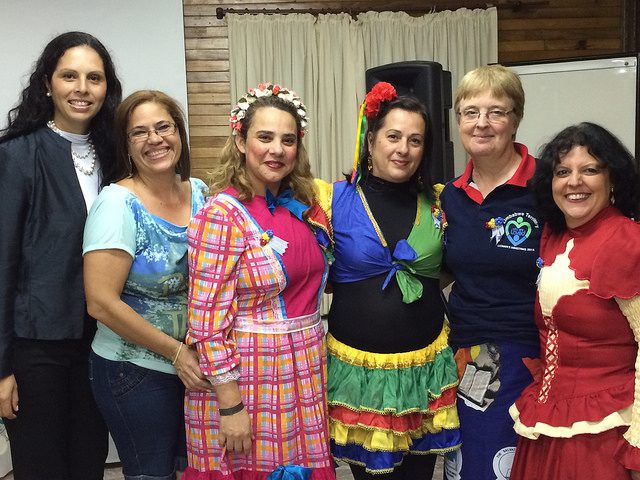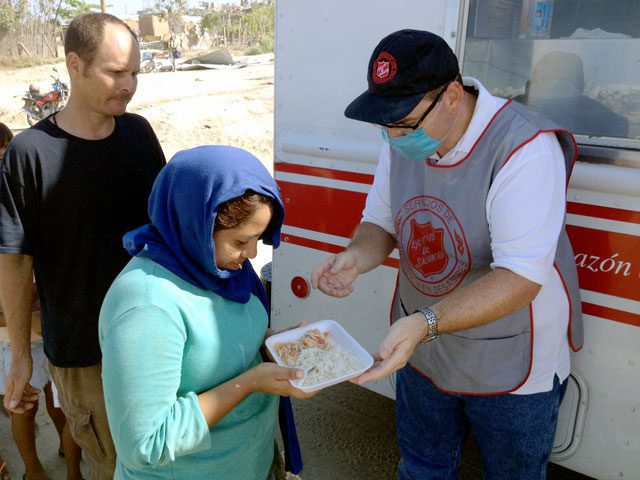Dominican Republic
While Hurricane Georges wreaked havoc on the Dominican Republic, it brought a blessing in its aftermath–awareness by the public and government of The Salvation Army’s presence on the island. “Many people came to the The Salvation Army, and a number were converted,” said Captain Vilo Exantus. The government’s appreciation for the Army’s relief work resulted in its waiving the duty on goods coming into the country for Army assistance. Relief work resulted in the establishment of two new corps; Home Leagues blossomed as well and now there are six.
Vilo and his wife, Captain Yvrose Exantus, are the officers in charge. Both are Haitian and had to master Spanish to carry on the work (with the Cuba Division now a part of the Latin America North Territory, this is the only Spanish-speaking country in the territory). They are the only Salvation Army officers in the Dominican Republic, which recently was designated a region during General Paul A. Rader’s visit to the territory.
Salvationist volunteer Ryan Marshall, 22, who soldiers at the Lakewood Temple, Minn., corps, arrived three weeks before Georges hit. He has assisted with relief work, as well as with youth and computer operations. “This has given me such a perspective on how we are spoiled in the U.S.,” Marshall said. “It gives me a new look at poverty in developing countries.”
Beginnings
The Salvation Army started here in 1995, due to the efforts of Angelita Rosario, a Salvationist from New York, who was originally from the Dominican Republic. Envoy Roberto Santos was sent to help establish the work, and then the Exantuses arrived in 1996. Now, there are more than 100 soldiers, 10 corps and outposts, and seven Dominican Republic cadets in the training college–five of whom are university trained, and all of whom are teachers or pastors.
It’s a region on the go, and many of its struggles are a result of growth: “The work is new here, and our envoys keep going to CFOT,” said Yvrose Exantus with a smile. “So we have no consistency to the programming. We are continually having to train people.”
Hurricane relief
Santo Domingo Corps #1 was the center of hurricane operations. Operating from a former restaurant, the Army fed thousands of meals; at another site, the Army served meals to 900 victims housed in a school.
In Tres Brasos, a destitute area where corrugated tin shacks line dirt roads, Western relief workers helped build or repair or reroof 30 houses destroyed in the hurricane. The volunteers made a difference. Open-air meetings were held, attended by 70 or 80. More than 50 children now attend Sunday school held outside. “We selected homes by going house-to-house to identify the needs,” said Vilo. “While one team built, another went evangelizing and ministering to families. In one case, The Salvation Army provided the funeral for a young man who died as a result of injuries inflicted by a looter welding a machete. The young man’s mother didn’t have the money for a funeral.”
Ongoing need
“The biggest needs we have,” said Vilo, “are for medical care and education. There is potential for Salvation Army ministry there. In some areas, there are no schools or a government school which is very inadequate.” That’s not surprising, considering the rural environment of the country. Along the way to the corps and outposts far outside the city, you drive through hills dotted with small wood or tin dwellings, and pass rice fields, coffee plantations and sugar cane fields. Small towns and hamlets periodically punctuate the road.
HURRICANE RELIEF–Western Salvationists rebuilt the wooden homes on this street; they were among the 30 repaired or rebuilt by the team.
The Army is providing valuable services. Moca San Jose has an active corps and a basic school for 25 children ages 3-5. It also has a special program for 10 children who can’t read or write. Moca Milagrosa has an outpost providing spiritual stability to the community. On Sundays, 35 adults and 35-40 children meet in a converted garage downstairs from Envoys Julio and Karina Carasco’s quarters.
In Cotuí, site of the first corps in the Dominican Republic, Envoys Elias and Paula Polanco oversee programs including a twice-a-week feeding program, a basic school with 18 students, and church services attended by 50-60 adults and more than 50 children.
Las Caoabas is far off the main road, in a small community with no water, phones or electricity. A townsman has donated the land for the outpost. Of the 500 children in town, only 200 attend school. “Do you see these children?” Vilo asked. “They need everythingschool, clothing, food, spiritual life.” He relates one of many differences the Army is making in the community–and the challenges it creates. “It costs $300 pesos to marry; in many communities, couples live together and have children without marriage. Now that they have come to Christ, they realize they should marry, but they have no money.” They revolutionize the whole community life, raise up a standard, but can’t afford the $300 pesos.
Jose Elias Rosario, one of the first to attend meetings when the Army arrived two years ago, says “It was hard to leave the world of drinking and dancing, but after I accepted Christ I felt peace. I have a different life now. I didn’t want to get converted and leave rum and drink, but I am happy serving the Lord. I ask your prayers to remain strong in the faith.”
A Spanish FlavorOn the larger part of Hispaniola lies the Dominican Republic, a country of many contrasts. Columbus’s brother Bartholomew founded Santo Domingo in 1496. Within 50 years most native inhabitants had died of starvation, overwork in the gold mines, and epidemics. When the gold was exhausted by 1530, Spain’s interest turned to Mexico and Peru. In 1697 it ceded the western third of the island to France, and the remaining Spaniards imported black slaves to work the sugar cane. After the Dominicans declared independence, Haiti invaded and ruled it for 22 years. This domination is thought to be the partial cause of antagonism between the two countries. One good outcome, however, was the freeing of the slaves. The U.S. intervened during World War I to protect entrance to the Panama Canal. In 1930, the country fell into the hands of a dictator, General Rafael Trujillo. For nearly 31 years he headed a ruthless police state until his assassination in 1961. In 1965, fearing a Cuba-style Communist takeover, the U.S. again intervened. Since then the political scene has been relatively orderly, with freely elected presidents, though the economy remains weak. Ethnic makeup: predominantly mulatto or white, Hispanic in culture; language: Spanish; literacy: 83% of men and 85% of women; life expectancy: male, 66.57 years; female, 70.99 years . |











I don’t know if I’m going about this the right way, but I’m in desperate need of assistance.
I’ve lost my job and struggling with a whole lot right now.
Hello,
Thank you for your message and the opportunity to help. Please email new.frontier@usw.salvationarmy.org and provide your name, city, state and zip code so we can send your message to the appropriate location.
Best,
Cory